In this guide we will cover the 12 steps to help you to choose the best domain name which is a crucial step in establishing your online presence, it serves as your digital identity, representing your brand, business, or personal website.
Example of domain name structure
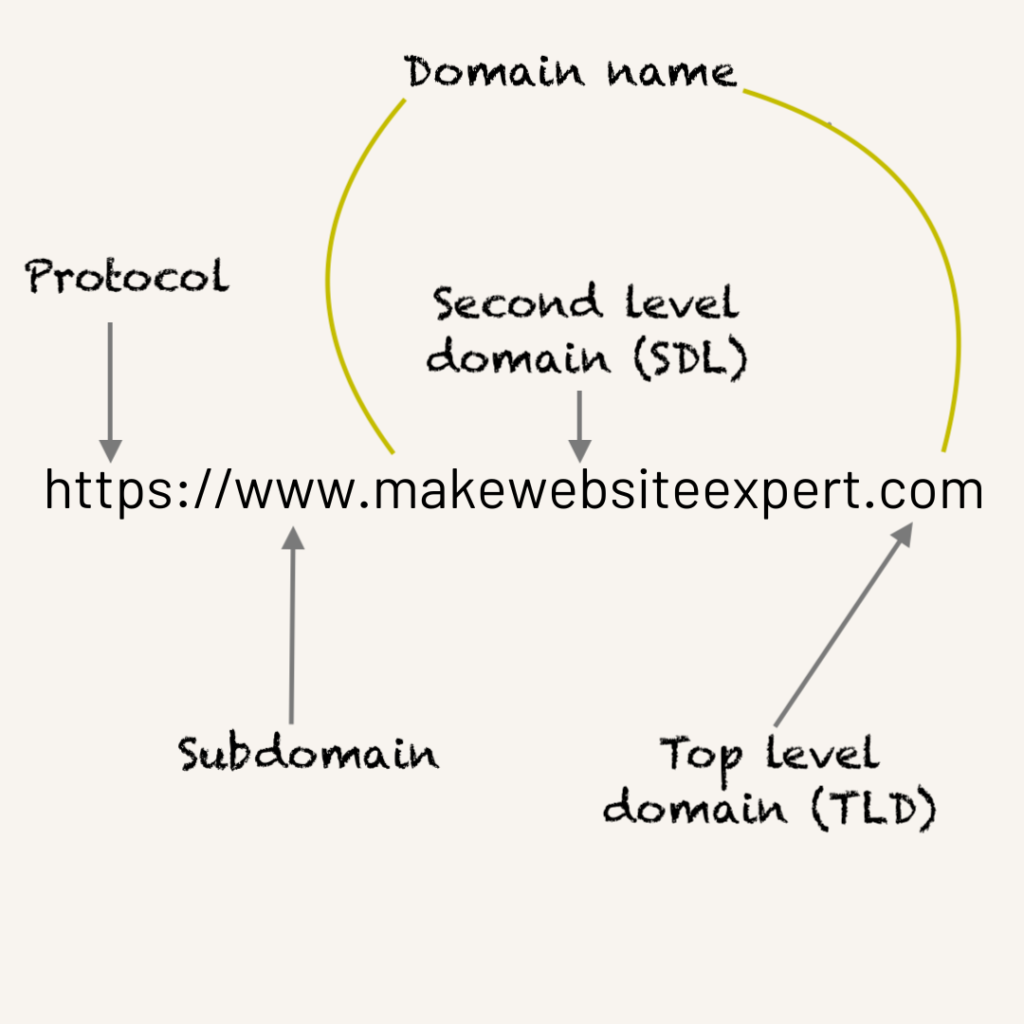
Table of Contents
- 12 steps to help you to choose the best domain name for your website.
- Step 1: Define Your Website’s Purpose
- Step 2: Check availability
- Step 3: Choose the right domain extension for your domain name
- Step 4: Choose memorable domain name
- Step 5: Research Competitors
- Step 6: Select Short and Simple domain name
- Step 7: Branding
- Step 8: Use keywords
- Step 9 : Long Term
- Step 10: Avoid special characters and numbers
- Step 11 : Select a good domain registrar provider
- Step 12 : Pronunciation
- FAQ
12 steps to help you to choose the best domain name for your website.
Step 1: Define Your Website’s Purpose
- Clarify the primary purpose of your website. Is it for a business, blog, portfolio or personal project
- Identify key themes or keywords related to your content or niche
Step 2: Check availability
- Firstly use domain generator tools to get ideas and check availability for instance
Hostinger: You can check for domain availability. Moreover, they offer a unique domain generation feature using AI, creating distinctive domain names based on the provided description

Bluehost: Helps you to generate domain name you’re looking for

NetworkSolutions: it helps you to generate unique domain names tailored to your business using the power of AI and check availability as well.
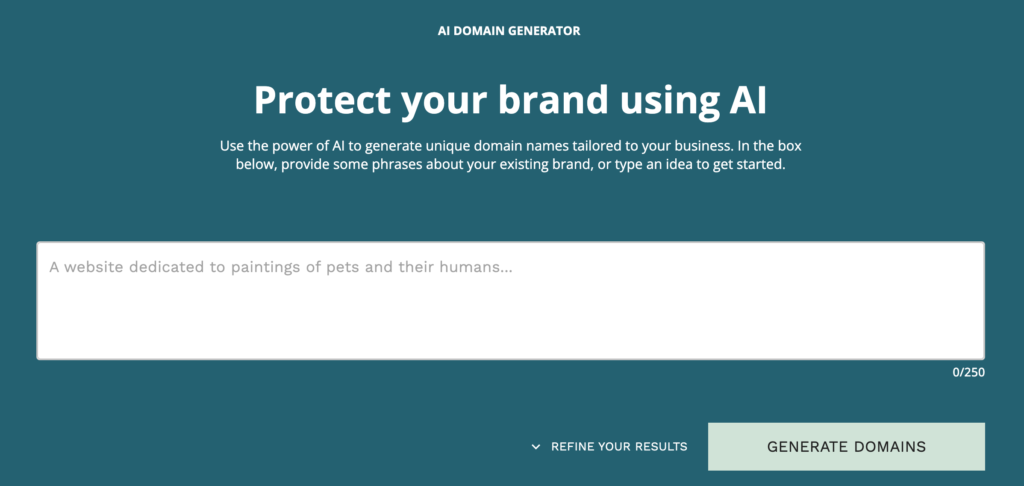
Step 3: Choose the right domain extension for your domain name
- Try to choose widely accepted extension like .com, .net or .org.
- While .com remains the preferred domain extension, on the other hand, if the desired domain name is unavailable with the .com extension, it is advisable to explore alternative extensions such as .net.
The below chart shows distribution TLD (Top-level domain) names
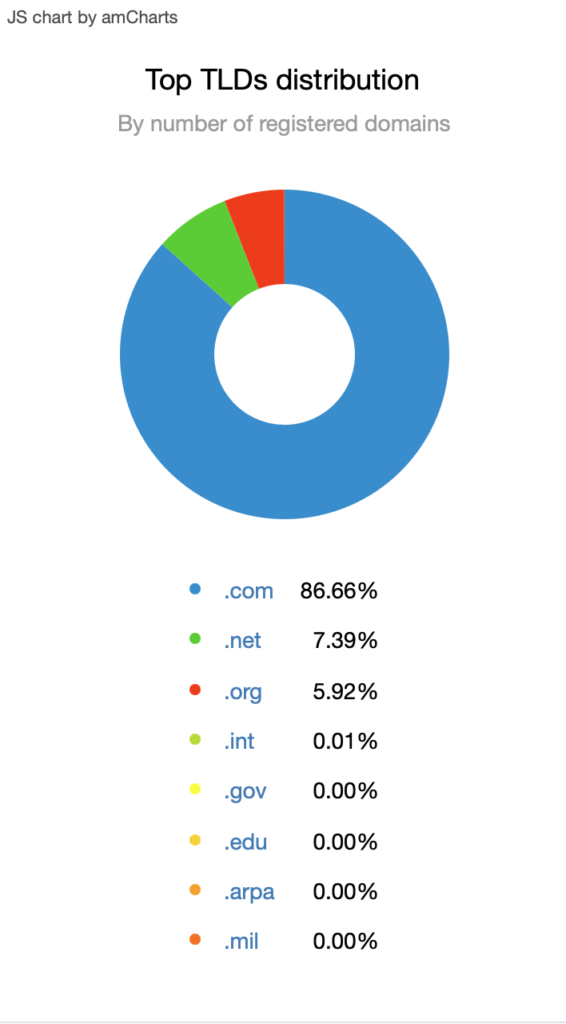
Source: Domainnamestat
Step 4: Choose memorable domain name

- When planning your website, consider the future scalability. This entails assessing whether the chosen domain will remain relevant as your content or business evolves.
- Avoid complex words, hyphens, or numbers that could be easily forgotten or mistyped.
Step 5: Research Competitors
- Investigate the domain names of your competitors to ensure yours is distinct.
- Avoid similarities that could lead to confusion.
Step 6: Select Short and Simple domain name
- Shorter domain names are easier to type, remember, and share.
*According to datagenetics.com most common name length is around 12 characters for .com and .net

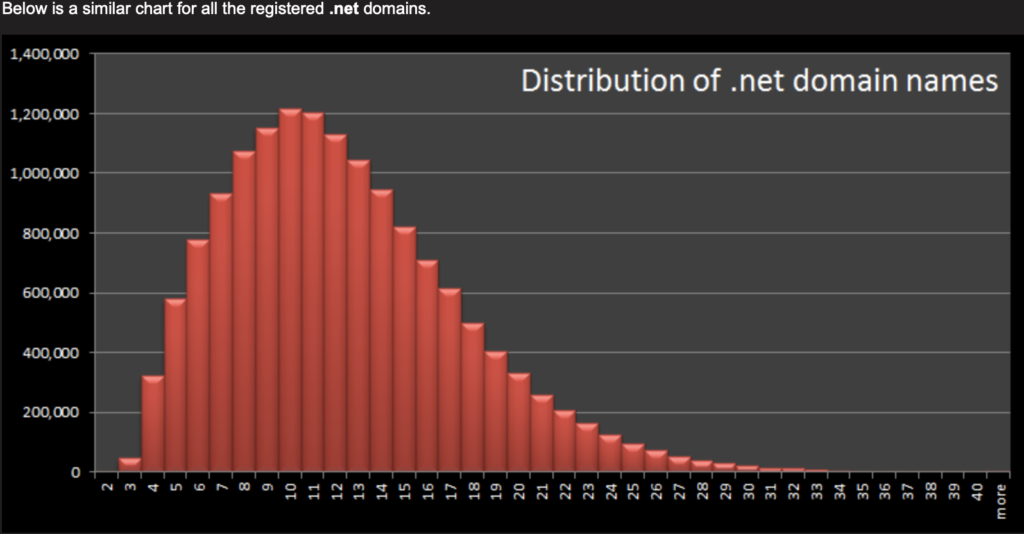
Source: Datagenetics
Step 7: Branding
- If your website represents a brand, use the brand name or a variation of it in the domain.
- Ensure that the domain aligns with your overall branding strategy. Additionally, consider factors such as brand consistency and memorability when finalizing your choice
Step 8: Use keywords
- To enhance your domain, integrate relevant keywords, especially if they align with the main topics or services offered on your website. For instance, if your business revolves around car washing, consider a domain like carWash.com
- Be cautious not to over-optimize; the domain should sound natural and not forced.
- Using keywords that people use to search for products or services this helps your ranking on search engines like Google search
FREE keyword research tools
Ahrefs
- The tool is FREE
- It shows the demand, completion for the keyword and related questions as well

Google Keyword planner
- The tool is FREE
- Discover new keywords
- Get search volume and forecasts

Semrush
- The tool is FREE and it’s generous
- Wide range of keyword research tools
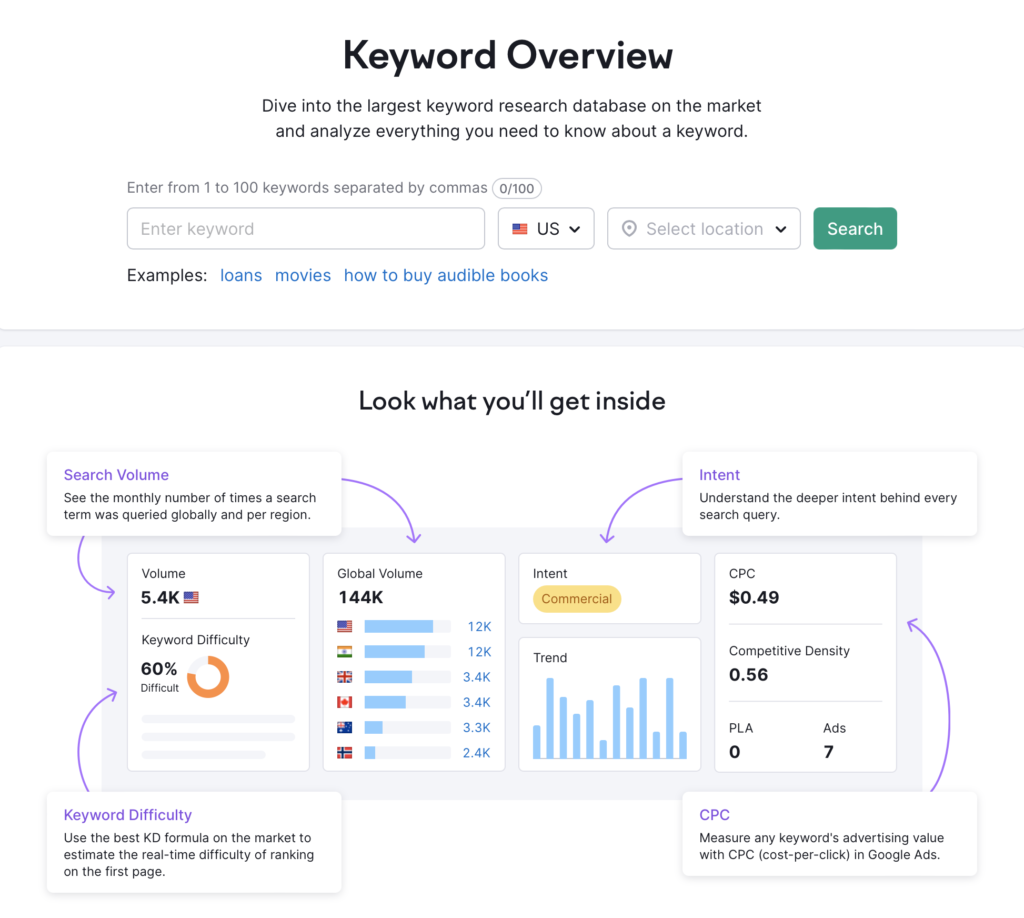
Step 9 : Long Term
- Additionally, consider the future scalability of your website, ensuring that the domain remains relevant as your content or business evolves.
- You need to avoid trends that might become outdated very quickly.
Step 10: Avoid special characters and numbers
- Do not add Hyphens and numbers in the domain name
- Your domain name should be easy to spell, pronounce and memorable, numbers and hyphens will make it difficult to remember domain name.
Step 11 : Select a good domain registrar provider
- Select a reliable domain registrar with good customer support, transparent pricing, and a user-friendly interface.
- Popular registrars like
– Hostinger
– Bluehost
– DreamHost
– SiteGround
Step 12 : Pronunciation
- Share your potential domain with friends or family to ensure it’s easy to test pronounce and understand.
- Avoid names that might be frequently mispronounced or misspelled.
FAQ
What is a domain name?
A domain name is like the address for your website on the internet.
It’s what people type into their browsers to visit your site. For example, if the internet is our city, then “www.example.com” is like the address of a specific house (website) in that city.
Does domain name affect SEO?
It can the choice of a domain name can impact SEO (Search Engine Optimization). While it’s not the only factor and certainly not the most crucial one, it does play a role in how search engines perceive and rank your website.
Selecting a good domain name is important for SEO and selecting a bad one will confuse search engines
For example, location + service.com if there is a search volume for the combination then this will make an impact in your SEO ranking
How important is a relevant domain name?
Relevant domain names can boost your brand and ranking SEO but to get higher ranking your services/content should be relevant to what people are looking for and the site has good SEO.
Having a relevant domain name helps visitors to remember your site name and understand what’s your site service / products does provide.
How to choose a domain name?
Follow the 12 steps we have listed in the guide
How to choose a domain name for your business?
Follow the 12 steps we have listed in the guide

